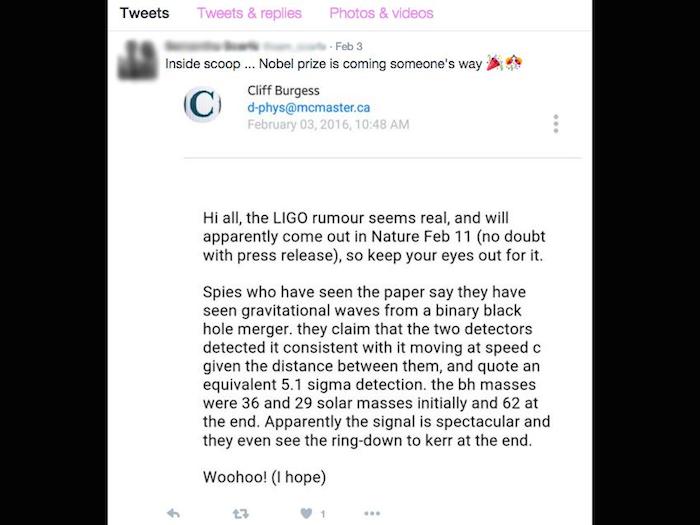.

The LIGO facility in Livingston, Louisiana, has a twin in Hanford, Washington.
-
‘Woohoo!’ email stokes rumor that gravitational waves have been spotted
.
It's just a rumor, but if specificity is any measure of credibility, it might just be right. For weeks, gossip has spread around the Internet that researchers with the Laser Interferometer Gravitational-Wave Observatory (LIGO) have spotted gravitational waves—ripples in space itself set off by violent astrophysical events. In particular, rumor has it that LIGO physicists have seen two black holes spiraling into each other and merging. But now, an email message that ended up on Twitter adds some specific numbers to those rumors. The author says he got the details from people who have seen the manuscript of the LIGO paper that will describe the discovery.
"This is just from talking to people who said they've seen the paper, but I've not seen the paper itself," says Clifford Burgess, a theoretical physicist at McMaster University in Hamilton, Canada, and the Perimeter Institute for Theoretical Physics in nearby Waterloo. "I've been around a long time, so I've seen rumors come and go. This one seems more credible."
.

According to Burgess's email, which found its way onto Twitter as an image attached to a tweet from one of his colleagues, LIGO researchers have seen two black holes, of 29 and 36 solar masses, swirling together and merging. The statistical significance of the signal is supposedly very high, exceeding the "five-sigma" standard that physicists use to distinguish evidence strong enough to claim discovery. LIGO consists of two gargantuan optical instruments called interferometers, with which physicists look for the nearly infinitesimal stretching of space caused by a passing gravitational wave. According to Burgess's email, both detectors spotted the black hole merger with the right time delay between them.
LIGO's prime target has been the death spiral and merger not of two black holes, but of two neutron stars. However, Marc Kamionkowski, a theoretical physicist at Johns Hopkins University in Baltimore, Maryland, says the signal from the merger of more-massive black holes should be stronger and detectable from a greater distance. Other, less specific rumors suggest that LIGO has seen more than one source.
Of course, all of this remains speculation until the LIGO team announces its latest results—which according to Burgess's rumor could happen next week. "If this is true, then you have 90% odds that it will win the Nobel Prize in Physics this year," Burgess says. "It's off-the-scale huge."
As to the origins of the email, Burgess says he sent it to the entire McMaster physics department to alert his colleagues and especially students of what might be coming: "It's one of those big events where the students may be a little bored by what they are doing in class but they may be excited by this."
Quelle: AAAS
4088 Views
